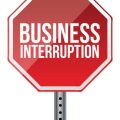Understand What American Employers Look For
If you want your resume to stand out in the United States, it’s important to know what American employers value most. U.S. companies are looking for candidates who can not only do the job but also bring added value to their teams. Here’s a breakdown of the key traits and skills that American employers prioritize:
Key Traits and Skills U.S. Employers Value
| Trait/Skill | What It Means | How to Show It on Your Resume |
|---|---|---|
| Professionalism | Being reliable, respectful, and maintaining high standards at work. | Mention punctuality, strong work ethic, and examples of responsible behavior. |
| Adaptability | The ability to adjust quickly to new situations or changes. | Highlight experiences where you learned new skills or adapted to change. |
| Results-Oriented Achievements | Focusing on getting things done and achieving measurable results. | Use numbers and action verbs to show your impact (e.g., “Increased sales by 20%”). |
| Teamwork | Working well with others to achieve common goals. | Share examples of successful collaborations or team projects. |
| Communication Skills | The ability to clearly share ideas and information. | Mention presentations, reports, or customer interactions you handled well. |
Why These Traits Matter
American employers want employees who fit into their company culture and can contribute right away. Showing these qualities on your resume helps prove that you’re the right person for the job. Focus on concrete examples from your past experience that demonstrate these traits—this will help your resume catch an employer’s attention.
2. Choose the Right Resume Format
When applying for jobs in the United States, picking the right resume format is a big step toward making a great first impression. American employers are used to seeing certain styles, and choosing the best one can highlight your strengths and make you stand out from other candidates.
Popular Resume Formats in the U.S.
There are three main types of resume formats commonly accepted by American companies. Each format serves a different purpose, so it’s important to select the one that fits your experience and job goals best. Here’s a quick overview:
| Format | Description | Best For |
|---|---|---|
| Reverse Chronological | Lists your work history starting with your most recent job first. Shows a clear timeline of your career. | Candidates with consistent work experience and a solid career path. |
| Functional | Focuses on skills and abilities rather than dates or job titles. Work history is often summarized at the end. | People changing careers, those with gaps in employment, or little direct experience. |
| Combination (Hybrid) | Merges elements of both chronological and functional formats. Highlights skills at the top, followed by a detailed work history. | Candidates with relevant skills and some steady experience who want to showcase both. |
How to Decide Which Format Fits You Best
- If you have steady work experience in the same field, go with reverse chronological. Most recruiters prefer this format because it’s easy to follow.
- If you’re making a big career change or have gaps in your work history, try a functional resume. It helps draw attention to your transferable skills.
- If you have both strong skills and solid experience but want to emphasize your strengths, use the combination format for flexibility.
Tips for Formatting Your Resume
- Keep your layout simple and professional—avoid fancy fonts or too many colors.
- Use clear headings like “Experience,” “Education,” and “Skills.”
- Stick to standard U.S. letter size (8.5 x 11 inches) when submitting documents online or printing them out.
Remember:
The right resume format helps recruiters quickly find what makes you unique. Take time to match your resume style to your background and the job you’re aiming for, so your application gets noticed for all the right reasons!

3. Tailor Your Resume for Each Job Application
One of the most important steps in creating a resume that stands out to American employers is customizing it for each job you apply to. Instead of sending the same resume everywhere, take time to adjust your information so it matches what the employer is looking for. This shows that you are serious about the position and helps your resume get noticed by recruiters and applicant tracking systems (ATS).
Why Customization Matters
Most companies use ATS software to scan resumes before a real person ever sees them. These systems look for keywords and phrases from the job description. If your resume doesn’t include these keywords, it might never reach the hiring manager’s desk. By tailoring your resume, you can make sure it passes through these filters and demonstrates that you are a great fit for the job.
How to Match Your Resume to the Job Description
Start by carefully reading the job posting. Identify the key skills, experiences, and qualifications listed by the employer. Then, update your resume to highlight those points in your own background. Use similar language and terminology as the job ad to show you understand what they need.
Example: Customizing Your Resume
| Job Description Says | Your Resume Should Include |
|---|---|
| Project management experience required | “Led multiple projects from planning to completion, ensuring timely delivery” |
| Strong communication skills | “Presented weekly updates to cross-functional teams and stakeholders” |
| Proficient in Microsoft Excel | “Analyzed data using advanced Excel functions including pivot tables and VLOOKUP” |
Tips for Effective Customization
- Use Keywords: Find important words and phrases in the job posting and use them in your resume.
- Highlight Relevant Experience: Move your most related achievements and jobs to the top of each section.
- Edit Your Summary: Rewrite your professional summary to match what this specific employer wants.
- Remove Unrelated Details: If something isn’t relevant to this job, leave it out or minimize its focus.
Quick Checklist for Tailoring Your Resume
- Did you use keywords from the job description?
- Does your work history reflect skills the employer values?
- Is your summary statement focused on this specific role?
- Are irrelevant positions or details minimized?
Taking these extra steps can greatly increase your chances of getting noticed by American employers and moving forward in the hiring process.
4. Highlight Accomplishments with Action Words
When applying for jobs in the United States, it’s important to make your resume stand out by highlighting what you’ve achieved—not just what you were responsible for. American employers look for candidates who can show results and impact, so make sure your accomplishments are clear, specific, and measurable. One of the best ways to do this is by using strong action verbs and quantifiable results.
Why Use Action Words?
Action words (also called action verbs) grab attention and quickly show the employer what you have done. Instead of saying “Responsible for managing a team,” say “Led a team of 10 to exceed sales targets by 20%.” This change makes your experience more dynamic and impressive.
Examples of Strong Action Verbs
| Weak Word | Action Verb |
|---|---|
| Helped | Assisted, Supported, Facilitated |
| Did | Accomplished, Executed, Completed |
| Made | Created, Developed, Designed |
| Worked on | Managed, Coordinated, Led |
| Was in charge of | Directed, Oversaw, Supervised |
| Tried | Initiated, Launched, Implemented |
Showcase Quantifiable Results
Whenever possible, add numbers to your achievements. Quantifying your impact helps employers understand the scale of your contributions. For example:
- Increased social media followers by 30% in six months.
- Reduced costs by $5,000 annually through process improvements.
- Awarded “Employee of the Month” three times for outstanding customer service.
- Trained and supervised a team of 15 new hires.
- Managed a portfolio worth over $1 million.
Before and After Examples
| Boring Description | Standout Achievement Statement |
|---|---|
| Responsible for customer service. | Delivered excellent customer service to over 100 clients daily, resulting in a 95% satisfaction rate. |
| Took part in project management. | Coordinated a cross-functional team to deliver projects ahead of schedule by 10%. |
| Duties included filing and data entry. | Organized and digitized records for 500+ clients, improving data retrieval speed by 40%. |
This approach helps you present yourself as a proactive candidate who adds real value to organizations—exactly what American employers are looking for!
5. Follow American Resume Conventions and Avoid Common Mistakes
When applying for jobs in the U.S., it’s important to tailor your resume to American standards. Employers expect certain formats and information, and following these conventions will help your resume stand out for the right reasons.
Keep It Concise and Focused
American employers value clear, easy-to-read resumes that quickly highlight your qualifications. Try to keep your resume to one page if you have less than 10 years of experience, and no more than two pages if you have extensive experience. Use bullet points to describe your achievements and avoid long paragraphs.
Resume Length Guidelines
| Experience Level | Recommended Resume Length |
|---|---|
| Entry-Level (0-5 years) | 1 Page |
| Mid-Level (5-10 years) | 1-2 Pages |
| Senior-Level (10+ years) | No more than 2 Pages |
Omit Personal Details Not Needed in the U.S.
Unlike some countries, American employers do not want personal details that are unrelated to your ability to do the job. Leave out information such as:
- Date of birth/age
- Marital status
- Gender or photo
- Nationality or immigration status (unless specifically requested)
- Religious or political affiliations
This helps protect both you and the employer from potential bias in the hiring process.
Proofread Carefully—No Typos Allowed!
Even a small typo can make you look careless. Before you send your resume, use spell check and read through it slowly. You can also ask a friend or use online tools like Grammarly to catch errors. Attention to detail matters—a perfect resume shows you care about quality work.
Quick Proofreading Checklist
- Check for spelling and grammar errors
- Make sure dates and job titles are consistent
- Avoid using fancy fonts; stick with clean options like Arial or Calibri
- Double-check contact information is correct
- Ensure formatting is uniform throughout the document
Avoid These Common Resume Mistakes in the U.S.
- Including Irrelevant Experience: Only list jobs or skills that relate directly to the position you’re applying for.
- Using an Unprofessional Email Address: Create a simple email address using your name if needed.
- Lying or Exaggerating: Always be honest—employers can verify your background.
- Sending a Generic Resume: Tailor each resume to fit the job description whenever possible.
If you follow these American resume best practices, you’ll show employers that you understand their expectations—and you’ll have a much better chance of landing an interview.


